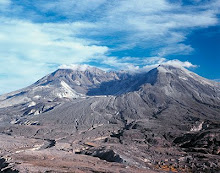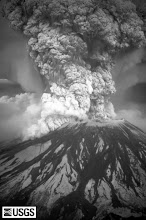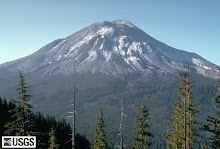"I immediately thought, 'Oh my, you expect volcanoes to erupt, but you don't expect mountains to fall apart,'" Dorothy Stoffel said. "I immediately recognized this was going to be a huge event."
On May 18, 1980, Mt. St. Helens had it's most famous eruption, when it blew off a huge chunk of the mountain off! Not only that but it blew an ash cloud 63,000 ft. and across many states covering every thing with ash.
Unfortunately, the eruption started forest fires and melted snow, which caused floods and mudslides and washed away buildings, roads, bridges and flattened many trees.
It also killed about 57 people and 21 bodies were never recovered from the blast zone. Some were buried to death by, ash, mud, or by falling trees.
But, on the plus side, volcanoes give us geothermal energy, valuable minerals, fertile soil and recreation opportunities.




